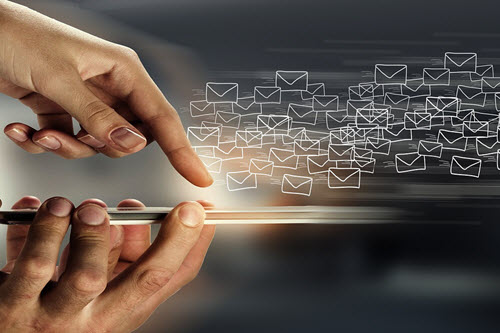4 Hacks That Will Get Your E-mails Opened and Read
A Call to Action
E-mail is our front line of communication. And because of that, everyone’s inbox is overloaded. Of course, your e-mail is brilliant/critical/urgent/important. So how do you write an e-mail that gets opened and read? And if you read to the end, there’s a bonus e-mail tip you will want to try out.
E-mail is our front line of communication. And because of that, everyone’s inbox is overloaded. Of course, your e-mail is brilliant/critical/urgent/important. So how do you write an e-mail that gets opened and read? And if you read to the end, there’s a bonus e-mail tip you will definitely want to try out.
For better or worse, e-mail (and e-mail marketing) is not going anywhere. In fact, study after study shows e-mail provides the highest ROI of all the digital channels we can use to reach our audience of leads, prospects, clients, and referral sources.
And let’s not forget how efficient e-mail is. Whether you have just one or a large number of messages to get out, think about the investment of time that each phone call, coffee klatch, or lunch meeting would take … versus the time it takes to send e-mail.
But if your e-mails are not opened or read, they are not effective. So let me tell you four things you can do to write e-mails that get opened and read, no matter who you are e-mailing.
- Your Subject Line Must Have a Benefit for the Reader
You know which e-mails grab my attention? The ones with “You received a payment” in the subject line. These e-mails come from Stripe, my financial intermediary for everything I do for which I get paid. I open those e-mails right away because they indicate a benefit for me.
Here’s a subject line I used to introduce myself to new/potential referral sources: “I will make you look good.” And then my e-mail went on to explain who I am, what I do, and exactly how I could make them look good to their clients by retaining me.
Think about the subject lines of recent e-mails you received, regardless of the sender. Why did you open some immediately and let others languish in your inbox? I’m guessing the former had subject lines that piqued your interest while the latter had subject lines that offered no clue (or benefit) about why you should open them.
- Shorter is Better
Today, most e-mails are read on mobile devices. That “short” e-mail you wrote on your laptop looks like Tolstoy’s War and Peace on a smart phone (scroll, scroll, scroll).
If I open your e-mail on my phone and see it is long, my reaction is to let it sit in my inbox until I can get to my computer and read it on a large screen. Which sounds great … except it’s not. Because by the time I do that, your e-mail will be buried under 10–15 new e-mails I received. When I see your e-mail again, I’ll remember how long it was and postpone reading it until I have “more time” … whenever that is.
The perfect number of lines in an e-mail is debatable, but I’m a fan of five or less for most e-mails. Five or less lines fit on one screen of a smart phone—no scrolling required. It’s also a perfect amount of text that can be absorbed in about 15 seconds … while walking down the street, standing in line at some store, or waiting for drinks to be served.
And because these kinds of e-mails are easy to read, they are easy for the reader to respond to. Right away.
- Have a Clear Request or Call to Action
Nothing drives me crazier than going through an entire e-mail and not being able to figure out what the sender wants. If you are writing an e-mail that is longer than five lines and you want me to do something, make it ultra clear what your ask is in the first line.
And if what you’re asking for is that complicated, don’t e-mail … call.
- No Attachments
There’s no reason to attach anything to e-mails. When most e-mails are being read on smart phones, attachments suck.
Instead, use a service like Dropbox, Google Drive, or iCloud. Then send e-mails with links to the files you’re referencing. Not only do links make the e-mail download faster, they make the e-mail flow better as well; like this:
David: Here is my [program description], [bio], and [headshot] for our upcoming webinar. Thx! Rod
So What?
Yes, your e-mail is important to you. But what makes it important to the reader? In the end, your e-mail is a request for someone to do something—whether it’s a huge favor or just the favor of reading of your e-mail. Make it as easy as possible for them to give you what you want.
Bonus!!
If you want to know if your e-mail was opened, who opened it, how many times it was opened, or where it was opened from, you can look into free e-mail tracking software from HubSpot.
Everyone has a different idea of what a successful practice is. The practice you want is personal because it is based on what “successful” means to you. I help practitioners focus on the strategies and tactics to build/grow their versions of successful practices. If you want some help with that, e-mail me at rod@rodburkert.com.










